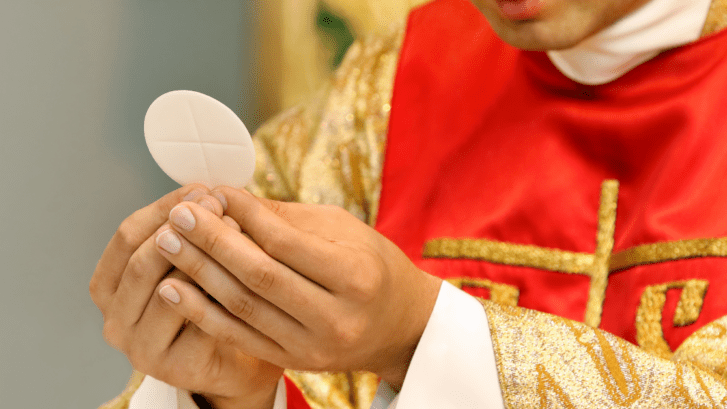In our second reading today, we read a letter St. Paul wrote to the Corinthians. Corinth was a diverse city, attracting people from all regions of the Roman Empire. It was a hub of government, trade and sports, yet was also known as a “sin city.” To live like a Corinthian came to mean “wallowing in immorality.”
This was the city to which Paul brought Christianity, and five years later, he wrote the letter we read today. We learn that the Corinthian Church was divided, torn into four factions, each following different leaders and going their own way. Paul writes to them to try to heal the divisions.
He likens the Church to the human body, with many parts, where no single part is insignificant. Each part has worth and value. He tells them that the Church should be like this: many different parts working together with Christ as the head, and every part of the body linked to Christ and to each other.
This letter reminds me of Week of Prayer for Christian Unity, which was recently celebrated around the globe. It is a week of prayer and a call for harmony among all believers.
Week of Prayer was started by our Founders, Father Paul Wattson and Mother Lurana White, here at Graymoor, more than a century ago. There have been so many efforts to heal division within our faith.
But when we look at our Church today, I suspect that we can recognize ourselves in some of the conflicts of the Corinthian Christians. Roman Catholics no longer think the same way, and we have all been hurt by recent scandals.
We now have contrasting opinions on almost everything. But, despite any differences we may have, we cannot lose sight of the fact that we form a single body because we are linked to the Risen Christ. We call ourselves His body.
As St. Paul says, the one bread makes us one body, though we are many in number. When we approach to receive Holy Communion, we become what we receive: the Body of Christ. This does not mean that dogma and morality—how we think and what we do—are unimportant.
Rather, it means that God’s water and God’s bread transform us, changing us from isolated individuals into a single body that Christ claims as His own. His command is for us to love one another.
In the 1980s, I worked part-time as a prison chaplain with a large HIV/AIDS population. The patients were isolated, sick, and weak. Despite the constant noise in the ward, I’ll never forget the silence when we read the Gospel story of Jesus reaching out to touch the leper.
Some of the men decorated the card table that was used as an altar. They made paper flowers and painted a cross to hang in front of the table. One man made a banner that read, “Love is all we have for now. What we don’t have is time.”
As the Church enters its Jubilee Year, the 2025 theme is hope, which is especially symbolic in our world, marked by war, division and violence. Hope and love are what distinguish us as human and Christian. Going to Mass and receiving Christ means nothing without love. When we are judged, the question will be: Did you truly love?
The banner’s second line reminds us, “What we do not have is time.” Time is precious for all, regardless of age or strength.
A sign I once saw in a convent chapel read, “Priest of God: Say this Mass as if it were your first, last, and only Mass.” We should live each day as if it were our first, last, and only— because each day is a chance to be more Christ-like.
A famous singer once wrote, “I did it all. And do you know what that’s called? It’s called living.” Wouldn’t it be better to say, “I loved, especially the homeless, hungry, lonely, and those different from me. I did what I could. And do you know what that’s called? It’s called loving.”
Remember, my friends: Love is all we have. What we do not have is time.



Thank you for this and every Wednesday’s readings. I look forward to the reading and always listen to them in peace and reflective time. your readings are very special to me and touch my heart and soul.